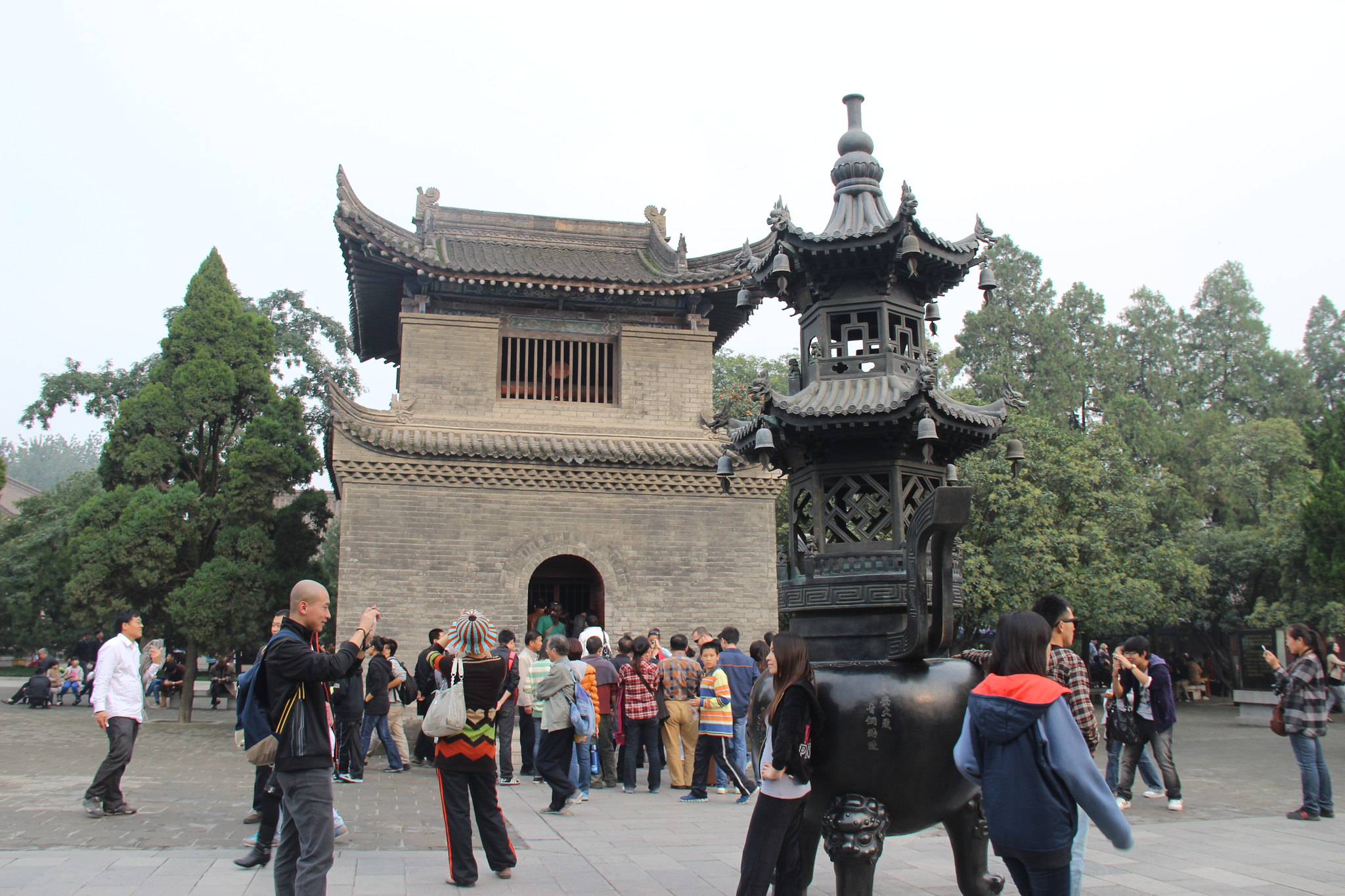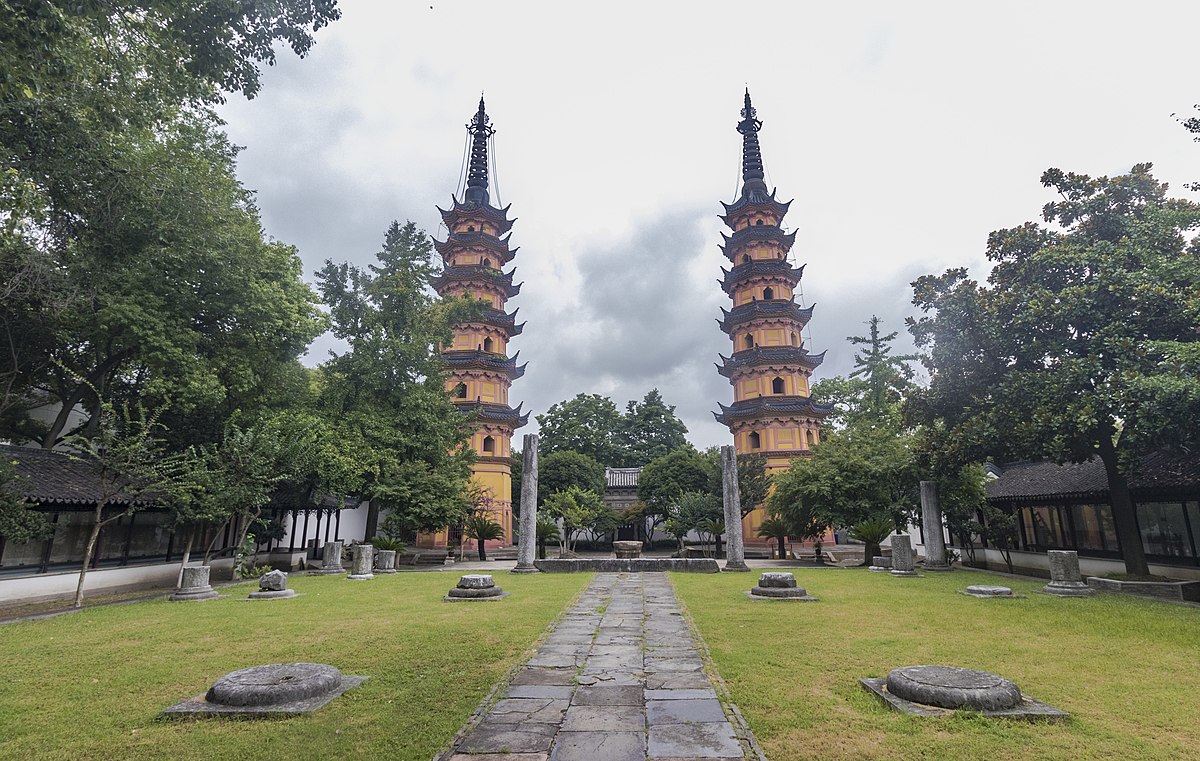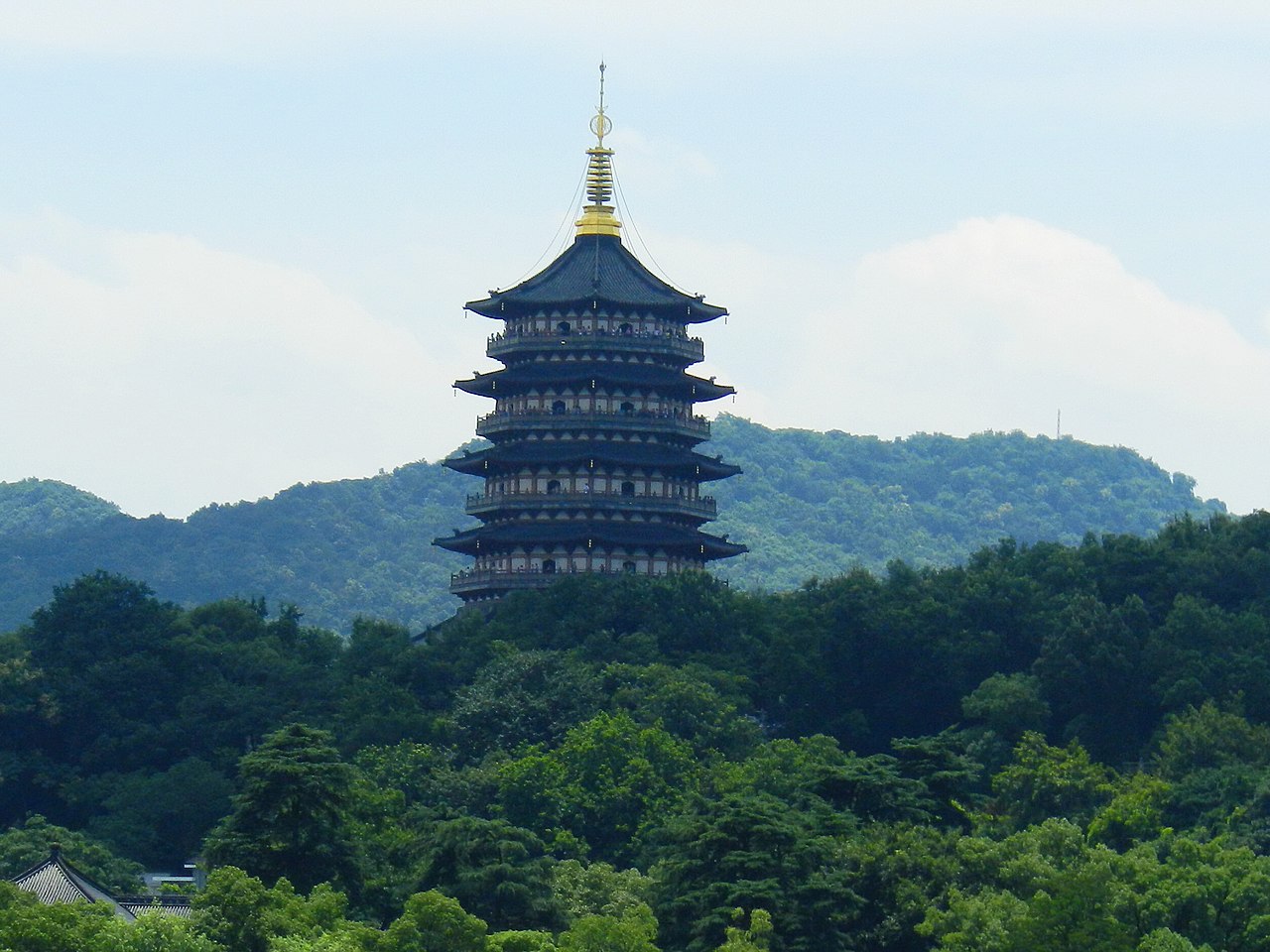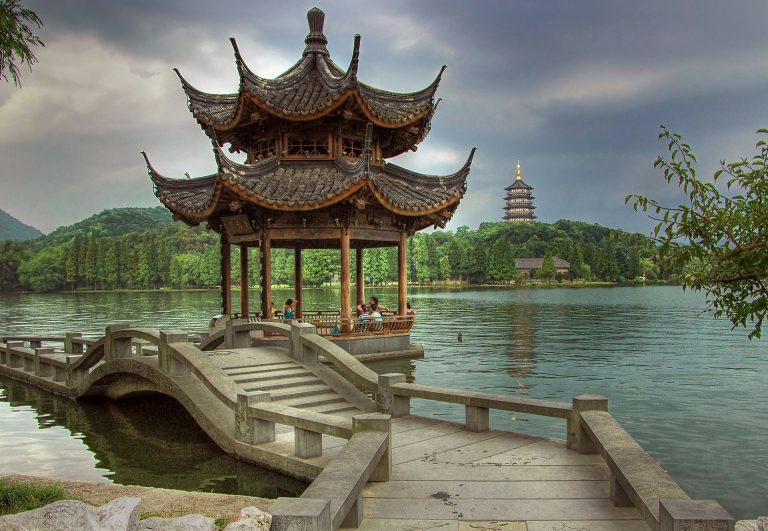In China, a city that lacks one or more of these architecturally magnificent structures is considered to be poor. Originally brought from India in miniature form, Pagodas were introduced during the Han era in AD 67 when Buddhism was proposed in China. The term Pagoda is believed to have been derived from the Sanskrit word bhagavati “goddess,” meaning blessed, and from bhagah, signifying good fortune. Traditional Chinese Pagodas were used as a Sanctorum in the monastery where Buddhist sculptures and sacred relics were enshrined.
The oldest documented mention of Chinese Pagodas originates from 139CE when an earthquake destroyed several hundred wooden pagodas. Ancient Chinese stone pagodas date back even further than this estimate. Some date back to roughly 100 BCE while others are more recent than 68CE.
When Emperor Ming, the second emperor of China‘s Eastern Han dynasty, dreamed of a 12-foot tall golden figure with a light emanating from his head, his ministers told him it was the Indian Buddha. Ming was so impressed he subsequently built the first Buddhist Pagoda in China constructed of wood and dispatched competent ministers to Eastern Han to spread Buddhist teachings.
Chinese monks sought the highly prized consecrated bones of deceased Buddhist masters called sarira and encased them inside the Pagoda which served as a tomb. Sarira means “body” in Sanskrit, or “relics” in Buddhist literature. Buddhists revere them as sacred artifacts, consider them precious, and believe they possess the masters’ life essence.
Sacred towers
Pagodas are built like a tower, usually with five, seven, or more tiers; some are sixteen stories high. The number is always odd in accordance with the ‘yang’ principle which carries with it good luck. The shape of Chinese Pagodas varies per dynasty, although the most prevalent shape is octagonal. The walls are very heavy and thick with a granite foundation. On every tier of its octagonal sides, there are windows or door-like openings that lead out to circular balconies. They usually have brick steps that lead from the exterior doorway to the next balcony.
Success
You are now signed up for our newsletter
Success
Check your email to complete sign up
Some pagodas don’t have balconies, some are entirely solid, and some are quite famous.
The Big and Small Wild Goose Pagodas
Emperor Gaozong of Tang built the Big Wild Goose Pagoda in the Temple of Great Maternal Grace complex also known as the Da Ci’en Temple complex in the South of Xi’an City.
This Pagoda is a remnant of the previously brilliant metropolis. After the Tang Dynasty’s collapse, it was razed and replaced, dating largely from the Qing Dynasty. The Giant Wild Goose Pagoda was originally 60 meters tall with five tiers. The current structure measures 64.5 meters tall. Buddhist monk Hsüan-Tsang (Chen Yi) spent 17 years in India collecting Buddhist texts. With Emperor Gaozong’s approval, the Big Wild Goose Pagoda was used to house and protect the texts which are recorded in the famous Datang-Xiyu-Ji document known as The Great Tang Dynasty Record of the Western Regions.

The Small Wild Goose Pagoda was built in 707 and was fashioned of blue mud bricks. Originally, it had 15 stories, and stood roughly 45 meters in height. Multiple storms and earthquakes damaged the two upper levels, leaving the 43.4 meter, 13-story Pagoda that remains today. Its construction includes thickly enclosed caverns. A massive iron bell adorns the temple’s Bell Tower. There is a story behind this pagoda.
Of the two schools in Buddhism, one of them permitted the intake of meat. One day when the disciples ran short of meat, a monk spotted a large flock of wild geese flying by, and thought, “Today we have no meat. I hope the Bodhisattva has something for us.” An injured goose fell to the ground at that very moment. The monks were all shocked and thought the Bodhisattva had arrived to strengthen their devotion. They built a Pagoda and quit eating meat from then on.
Porcelain Pagoda
The Nanjing Porcelain Pagoda, built in the Ming Dynasty, was one of the most beautiful and costly pagodas ever constructed. It was built over the course of 19 years during Emperor Yung’s reign in the Ming Dynasty. The nine story octagonal structure is recorded to have stood at a height of 79 meters. The finest bricks glazed with porcelain glittered in yellow, red, and green hues. Five precious night-luminous pearls were enshrined under the iron rooftop. The Pagoda was believed to stop floods from the Yangtze river, fire, and avert typhoons.
The Pagoda was allegedly decorated with Buddhist symbols. A big golden ball atop nine nine iron rings crowned the ceiling. Bronze dragons and phoenixes adorned the elegant upturned cornices, and the bronze bells tinkled in the breeze on each of the building’s nine terraces.
In 1856 Nankin was captured by Taiping rebels. The rebel chiefs destroyed the temple in a drunken victory rage.
The pagoda was reportedly still standing the following year, but it wasn’t long before it was completely destroyed by those who contended for more power. The magnificent Porcelain Pagoda shards were lost in the conflagration. The only relic left is the massive bronze cupola at the Southern city’s entrance.
The Great American Poet Henry Wordsworth Longfellow in his poem Kéramos eulogized The Porcelain Pagoda.

Twin pagodas
The Twin Pagodas, situated in the southeastern corner of the city proper of Suzhou, are the Dinghui Buddhist temple’s primary relics. The Pagodas were built of wood during the Northern Song era in 982 AD. The highly bronzed spires, dubbed “Pens,” resemble Chinese writing utensils. An elderly scholar is supposed to have erected them to bring good luck and help students pass the Imperial Examinations.
When most of the candidates failed, the scholar sought the advice of a geomancer. The geomancer explained to the scholar how absurd it was to supply two pens without ink. The “Ink” pagoda was then built, and afterwards an astounding number of candidates qualified.
Thunder Peak (Leifeng) Pagoda
The Thunder (Leifeng) Pagoda is without a doubt the most dramatic. The restored structure stands South of West Lake on Sunset Hill in Hangzhou and echoes the Baochu Pagoda in the North. It is a five-story tall pagoda with eight sides
It was built by King Qian of Wuyue Kingdom during the Taiping Xingguo Period. (Northern Song Dynasty 960-1127).
The Pagoda originally had a wooden frame. During the 16th century pirates from the Eastern sea who frequently pillaged and threatened the opulent city regarded this Pagoda as a means to spy on them, so they secretly set it ablaze. After three smoldering for three days, it still stood firm in its bare mud-brick core, despite the lack of superstructure.
There was a widespread assumption that the bricks and ground beneath the construction possessed therapeutic properties. Curious tourists dug up the ground, exposing the foundation, which almost led to the complete collapse of the Pagoda.

In 1924, the famous Pagoda finally fell during an invasion. When residents raced to dig for antiquities, they discovered that nearly every brick had a hole on one end, containing a sealed scroll. It was also discovered that the scrolls proved that the Imperial court concubine consort Wang ordered the Pagoda’s construction. It states that 84,000 scrolls were incorporated into the bricks to ensure the continued existence of Buddhism over the centuries.
But above all, it is the legend of The White Snake Enchantress that was imprisoned inside its gates that earned it tremendous veneration. The story’s mystical and romantic elements enchanted the minds of the Chinese populace. The narrative varies throughout China’s North and South, but the basic theme is the same. The White Snake Enchantress story exposes the futility of sexual love and the weakness of the flesh.
Pagodas aren’t merely constructed for the purpose of Feng Shui or superstitious purposes. Many of them were constructed in honor of good women who contributed to the preservation of Buddhism and the presentation of art in general. Some people believe that as their popularity declines, they will eventually fade into obscurity as a bygone art form.
















